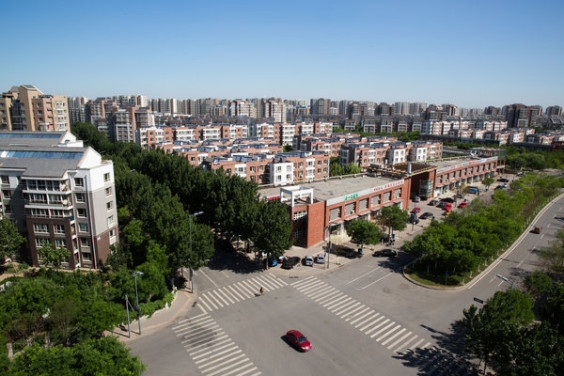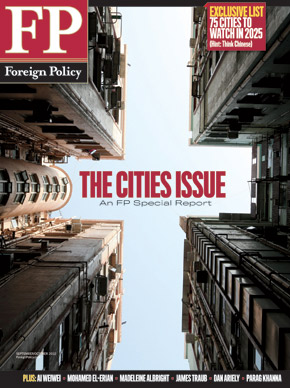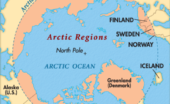Re The UN General Assembly Speaker Schedule is Here! I note that whoever will be speaking for Canada this year…
China’s Cities
Written by Diana Thebaud Nicholson // November 10, 2013 // China, Cities // Comments Off on China’s Cities
The Law of Unintended Consequences

Sim Chi Yin for The New York Times
Dissatisfaction and Dysfunction in a Model for China’s Urbanization: As China pushes ahead with government-led urbanization, Huaming might be an example of another transformation: the ghettoization of China’s new towns.
New China Cities: Shoddy Homes, Broken Hope
Three years ago, the Shanghai World Expo featured this newly built town as a model for how China would move from being a land of farms to a land of cities. In a dazzling pavilion visited by more than a million people, visitors learned how farmers were being given a new life through a fair-and-square deal that did not cost them anything.
Today, Huaming may be an example of another transformation: the ghettoization of China’s new towns.
Signs of social dysfunction abound. Young people, who while away their days in Internet cafes or pool halls, say that only a small fraction of them have jobs. The elderly are forced to take menial work to make ends meet. Neighborhood and family structures have been damaged.
Most worrying are the suicides, which local residents say have become an all-too-familiar sign of despair.
As China pushes ahead with government-led urbanization, a program expected to be endorsed at a Communist Party Central Committee meeting that began Saturday, many worry that the scores of new housing developments here may face the same plight as postwar housing projects in Western countries. Meant to solve one problem, they may be creating a new set of troubles that could plague Chinese cities for generations.
… Huaming is far from being a dangerous slum. It has no gangs, drug use or street violence. Nearly half the town is given over to green space. Trees line the streets that lead to elementary, middle and high schools.
But the new homes have cracked walls, leaking windows and elevators with rusted out floors. For farmers who were asked to surrender their ancestral lands for an apartment, the deterioration adds to a sense of having been cheated.
17 October
China’s Building Cities So Fast, People Don’t Have Time to Move In
With an estimated 700 million of its billion or so residents now residing in urban areas, China has reached an important tipping point in its evolution from an agrarian to industrial economy. But this mass population migration, combined with China’s insistence on central planning and general disdain for Keynesian theory, has resulted in an odd form of growing pain: massive, pre-fab cities built for a populace that doesn’t even exist yet.
China has built more than 500 of these empty cities since the cultural revolution in 1978, with hundreds more set to come online by the end of the decade. The theory behind it is solid; by 2020 one in eight humans will live in a Chinese city, totaling more than one billion people. China’s existing urban infrastructure simply cannot support that kind of population boom.
2012
15 November
China’s Ghost Cities
(CIC|OpenCanada.org) Chinese ghost cities are nothing new. While both Australia’s SBS Dateline and Qatar’s Al Jazeera have previously reported on China’s ghost cities, the story’s importance has not diminished over time. While Ordos is China’s most famous ghost city, there are many others visible from satellite imagery, primarily scattered across China’s central provinces:
… (On a side note, Canadian journalist Doug Saunders’ book Arrival City is an excellent read on the global shift from rural to urban environments. Highly recommended.) But why are there ghost cities in China in the first place? The most common explanation blames ill-advised, erratic and unsustainable government decisions to maintain high economic growth though relentless infrastructure investments. Blogger Brian Wang has also speculated that ghost cities are a convenient way for corrupt officials to hide their ill-gotten gains. While Wang’s hypothesis is only idle speculation, Evan Osnos has commented elsewhere on the difficulties of hiding cash in China:
… Notwithstanding the first world problems faced by China’s corruptariat, Yale professor (and former chairman of Morgan Stanley Asia) Stephen Roach takes a very different view of China’s ghost cities:
Reports of ghost cities, bridges to nowhere, and empty new airports are fueling concern among Western analysts that an unbalanced Chinese economy cannot rebound as it did in the second half of 2009. With fixed investment nearing the unprecedented threshold of 50% of GDP, they fear that another investment-led fiscal stimulus will only hasten the inevitable China-collapse scenario.
… a joint effort between UN-HABITAT, China Science Center of International Eurasian Academy of Sciences and China Association of Mayors. This report, covers five strategic steps to nurture and grow smarter cities. It aims to make easy access of international readers to the information about policies and practices that have engendered smart urbanization of China in the past 60 years. It also provides the experiences, lessons and challenges faced by China in sustaining its urban development in the context of rapid industrialization and urbanization within a globalizing world. To download Report (.pdf)

September/October
Foreign Policy – the Cities Issue
Foreign Policy special issue dedicated to the cities of the future has its eye squarely toward China, because the cities of the future are increasingly going to be speaking Mandarin — even more than you realize. It’s no longer news that China has embarked on the largest mass urbanization in history, a monumental migration from country to city that will leave China with nearly a billion urbanites by 2025 and an astonishing 221 cities with populations over 1 million. But this isn’t just about size: It’s about global heft. And that’s where the scale of China’s transformation into a world leader is truly astonishing. In an exclusive index for FP, the McKinsey Global Institute has run the numbers to produce what we’re calling The 75 Most Dynamic Cities of 2025 — an extraordinary 29 of which are in China. Some are already global powers, from top-ranked Shanghai to manufacturing dynamo Shenzhen; others, from Fuzhou to Xiamen, were little more than provincial backwaters in the 20th century but look to be household names in the 21st, powering the global economy not just through their sheer size but also through their urban innovation and pulsing drive. Europe, meanwhile, will manage only three cities on the list by 2025; the United States finishes second to China — a very distant second — with 13. Still think that debate about Western decline is overblown?
24 July
Floods in Beijing — Under water and under fire
(The Economist) Beijing has been under water a lot of late. Violent summer rainstorms flooded the city in June of last year, overwhelming the antiquated drainage system, flooding roads and paralysing the normally bustling city. On July 21st Beijing was struck again by an even more devastating rainstorm. According to official monitors it was the largest the city has suffered since records began to be kept in 1951. Beijing has been under water a lot of late. Violent summer rainstorms flooded the city in June of last year, overwhelming the antiquated drainage system, flooding roads and paralysing the normally bustling city. On July 21st Beijing was struck again by an even more devastating rainstorm. According to official monitors it was the largest the city has suffered since records began to be kept in 1951.
… Drainage was left to open sewers, sluices and canals, none of which was particularly effective when rains came. Over the past 1,000 years, the city has suffered 140 serious floods. Inundations in 1626 and 1890 were especially calamitous. Both of those floods came towards the end of dynasties, when corruption, neglect and mismanagement sapped the government’s ability to maintain public works.
24 July 2012
Beijing storm highlights risks for China’s cities
(Xinhua) … Urban flooding has been a chronic problem in China. This summer, rainstorms and flooding have wreaked havoc in many cities, including Guangzhou, Chongqing and Shenzhen.
Experts believe the floods are largely the result of urbanization, with vast networks of roads and the elimination of greenbelts decreasing some cities’ ability to cope with heavy rain. … Sheng Minzhi, an engineer at the Hangzhou Planning Bureau, said the mass construction of tall buildings and underground parking lots in some cities had also slowed the rate at which the ground can absorb rainwater.
6 October 2011
Huaxi: the village that towers above China
Until recently, Huaxi was a poor farming community, typical of eastern China. Now, thanks to the ambition of one man, it is a powerhouse symbol of the country’s economic expansion, embodied by a giant 328m-tall tower
(The Guardian) An incongruous new sight has risen up in the countryside of eastern China: a skyscraper taller than any building in London or Tokyo, topped by what looks very much like a giant, golden disco ball. The 328-metre supertower, which juts out of the Jiangsu plains like a trophy on an empty shelf, will be opened on Saturday by the village of Huaxi, a communist model community with a registered population of just 2,000 “farmers”.
Having been built up to the heavens during a period of global economic collapse, the megatower will be heralded as the latest symbol of China’s extraordinary economic expansion. But this bizarre new addition to the landscape also speaks volumes about the land pressures, environmental stress, inequality and rash investment that threaten the country’s long-term growth. (See also: Mark’s blog: “Chinese cities you’ve never heard of, but should know” Part 4)
25 January 2011
Edwrad H. Ziegler: CHINA’S CITIES, GLOBALIZATION, AND SUSTAINABLE DEVELOPMENT: COMPARATIVE THOUGHTS ON URBAN PLANNING, ENERGY, AND ENVIRONMENTAL POLICY
This Article discusses the development of China’s modern cities and China’s emerging urban planning and growth management programs as they relate to implementing newly established sustainable development policies. Global sustainable development issues
are discussed by comparing future growth and urban development in the United States and China. This Article examines urban sprawl, density of the built-environment, energy policy, automobile use, and transportation planning relative to future urban development and to their potential impact
on future resource and energy consumption.
27 September 2007
SHIJIAZHUANG, China — Hundreds of feet below ground, the water supply for this provincial capital of more than two million people is steadily running out. Municipal wells have already drained two-thirds of the local groundwater, and the water table is sinking fast.
Above ground, this city in the North China Plain is having a party. Economic growth topped 11 percent last year. Population is rising. One new upscale housing development is advertising waterfront property on lakes filled with pumped groundwater. Another half-built complex, the Arc de Royal, is rising above one of the lowest points in the city’s water table.
… For three decades, water has been indispensable in sustaining the rollicking economic expansion that has made China a world power. Now, China’s galloping, often wasteful style of economic growth is pushing the country toward a water crisis. Water pollution is rampant nationwide, while water scarcity has worsened severely in north China — even as demand keeps rising everywhere.
China is scouring the world for oil, natural gas and minerals to keep its economic machine humming. But trade deals cannot solve water problems. Water usage in China has quintupled since 1949, and leaders will increasingly face tough political choices as cities, industry and farming compete for a finite and unbalanced water supply.
One example is grain. The Communist Party, leery of depending on imports to feed the country, has long insisted on grain self-sufficiency. But growing so much grain consumes huge amounts of underground water in the North China Plain, which produces half the country’s wheat. Some scientists say farming in the rapidly urbanizing region should be restricted to protect endangered aquifers. Yet doing so could threaten the livelihoods of millions of farmers and cause a spike in international grain prices.
… The North China Plain undoubtedly needs any water it can get. An economic powerhouse with more than 200 million residents, the region has limited rainfall and depends on groundwater for 60 percent of its water supply. Other countries have aquifers that are being drained to dangerously low levels, like Yemen, India, Mexico and the United States. But scientists say the aquifers below the North China Plain may be drained within 30 years. Complete article



